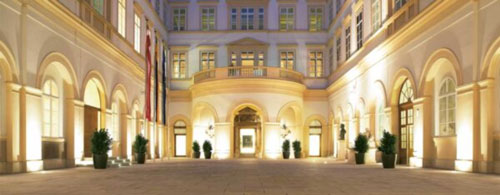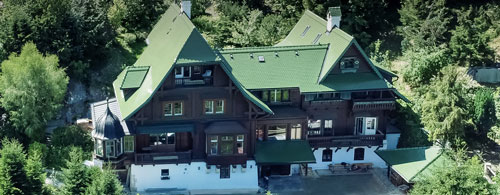
The history of Palais Niederösterreich
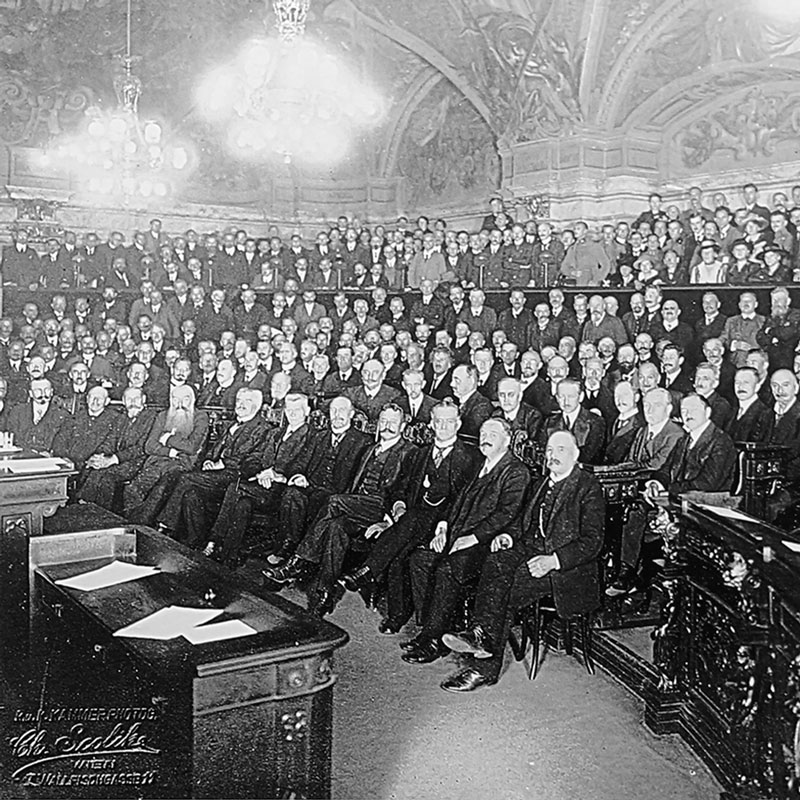
Old Estates House of Lower Austria
The story of Palais Niederösterreich began in 1513. It is where the Estates of Lower Austria once gathered. The hereditary homage ceremonies of the archdukes were also held here in the past. Later, it was the seat of the Lower Austrian provincial government, and the provincial diet met here.
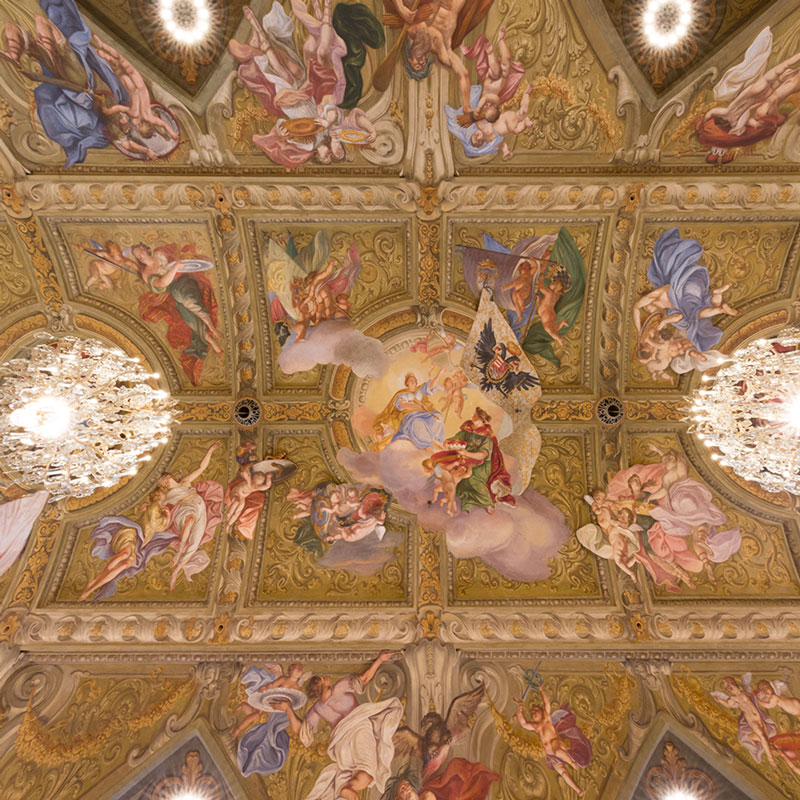
Largest ceiling fresco
The ceiling fresco in the Landtagssaal is the largest contiguous ceiling painting in Austria, at 472.14 square metres. It was created by painter Antonio Beduzzi in 1710, and was intended to express the grandeur and power of the “House of Austria”.
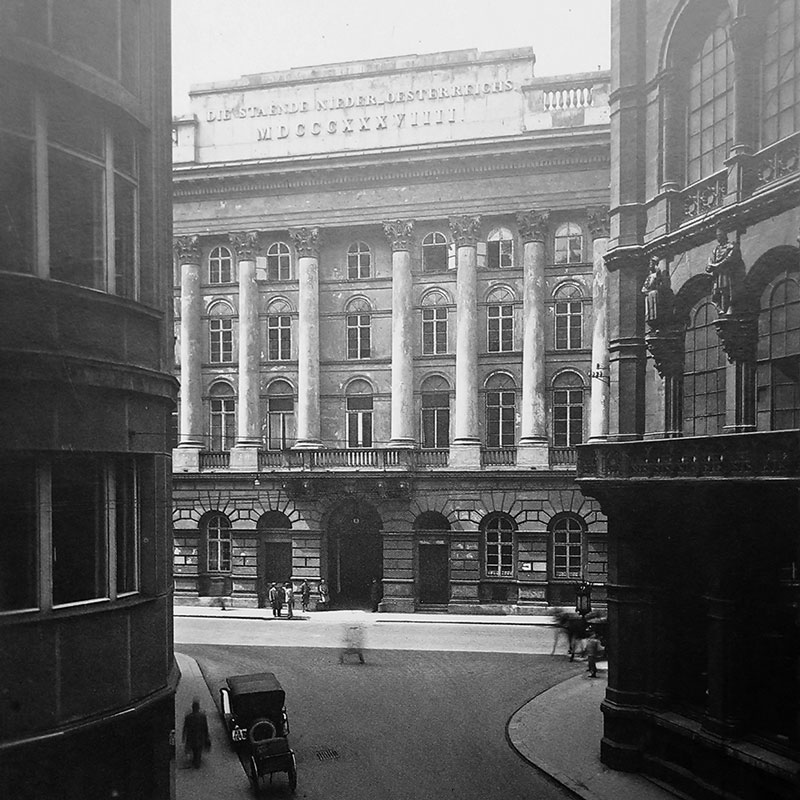
Anecdotes
Did you know that there is a secret underground passage from Hofburg Palace to Palais Niederösterreich? This enabled the imperial family to take part in the festivities held at the Estates House. You can find more anecdotes here:
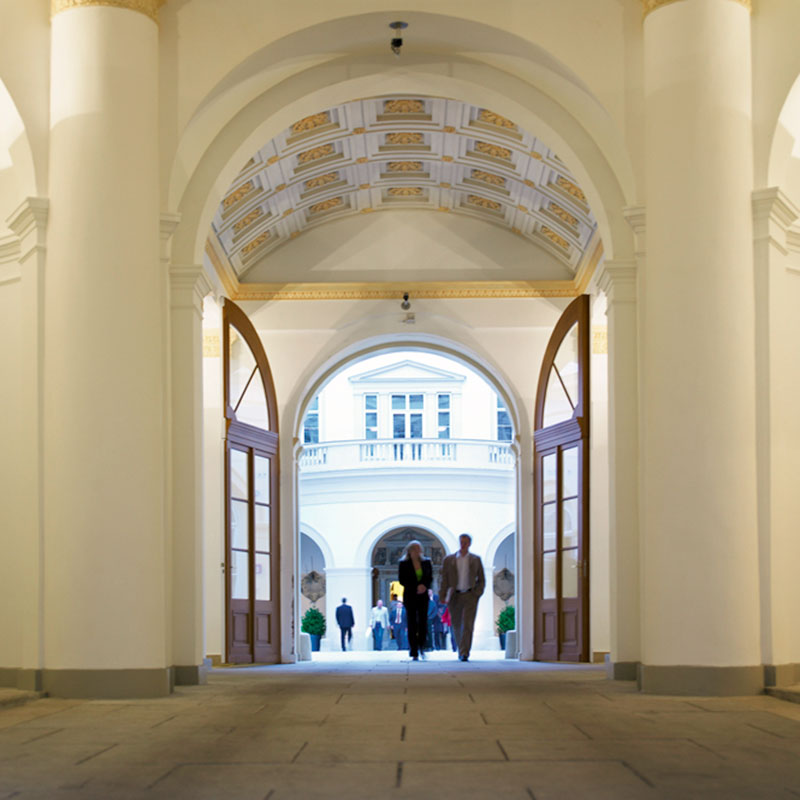
Tours
A palace full of history
The old Estates House of Lower Austria located at Herrengasse 13 in Vienna’s first district is one of the most storied and time-honoured buildings in the cultural and political history of Lower Austria.
1513
In 1513, the Estates of Lower Austria (prelates, lords, and knights as well as the princely towns and market towns), precursor to the modern Lower Austrian parliament, acquired a property not far from Hofburg Palace from the Liechtenstein brothers in order to be able to hold their provincial diets there.
A brief construction history
The Estates promptly launched an ambitious construction project on this plot acquired in 1513. The first construction phase in the late Gothic style lasted from 1513 to 1533. A main wing was built parallel to the Minoritenplatz property line, with short side wings extending towards Herrengasse. The former gate hall, which was converted to the palace chapel in 1845 and features a magnificent rib vault; the former gatekeeper’s lodge, which now serves as the sacristy; and the Gotisches Zimmer on the first floor, which features a star rib vault, have been preserved from this construction period.
The second construction phase, now in the Renaissance style, lasted from 1568 to 1586. The artistic director and master builder of the St. Stephan’s Cathedral workshop, Hans Saphoy, expanded the building to two storeys and extended the wings towards Herrengasse. In the main wing, he built the staterooms that have been preserved to this day, the Landtagssaal as well as the Prälatensaal, the Herrensaal, and the Rittersaal.
1710
The Landtagssaal was decorated with a high baroque ceiling fresco by Antonio Beduzzi in 1710.
1837
From 1837 to 1848, the Estates House was renovated and partially rebuilt in the Neoclassical style. The Estates were forced to consider expanding the building because one of the wings of the building had fallen into disrepair and there was a lack of space for the Estate administrative bodies. However, they did not pursue a complete rebuild, but rather an expansion and renovation aimed at preserving the historic rooms as much as possible. Architect Alois Pichl expanded the building to three storeys and relocated the main facade from Minoritenplatz to Herrengasse. At the same time, he successfully preserved the historically, culturally, and artistically significant fabric of the old Estates House by incorporating it into the new structure. This expansion and renovation gave the building the characteristic form that it still has today. The Estates House was the centre of Estate life and the symbol of the Estates’ power. Starting as early as the 16th century, the halls of the Estate House not only played host to political meetings, but were also used for court festivities and noble celebrations, primarily wedding celebrations. In 1760, the marriage of Archduke Joseph, who later became Emperor Joseph II, to Princess Isabella of Bourbon-Parma was celebrated here.
A covered walkway led from Hofburg Palace to the Estates House so that the imperial family could take part in the festivities held at the Estates House.
The court festivities included celebrations of the imperial family, such as to honour the birth of a prince or princess or the marriage of a family member, balls and theatre performances attended by the court, the reception of foreign legations, and victory celebrations, such as on 8 November 1620 following the victory of imperial forces over the Winter King, Frederick V of the Palatinate, in the Battle of White Mountain near Prague.
Thanks to its excellent acoustics, the Landtagssaal was considered one of the most important concert halls in Vienna. Particularly during the pre-revolutionary era, it played an essential role in Vienna’s musical life. Franz Schubert’s “Geist der Liebe” (“Spirit of Love”) premiered in the Landtagssaal on 15 March 1822, an 11-year-old Franz Liszt gave his first performance in Vienna here on 1 December 1822, and 39 concerts featuring works by Beethoven were held in the hall between 1815 and 1827.
1848
The revolution of 1848 erupted on 13 March from the courtyard of the Estates House of Lower Austria and the Landtagssaal, sweeping away Metternich’s system of censorship as well as the Estates system.
1918
The Austro-Hungarian Empire collapsed in 1918. On 21 October 1918, the German-speaking representatives of the Imperial Council assembled in the Landtagssaal of the Estates House of Lower Austria for the “Provisional National Assembly of the Independent German-Austrian State”, which constituted the birth of the First Republic.
1945
The Estates House of Lower Austria once again played an important role in 1945. Deliberately echoing the events of 1918, Karl Renner convened the three provincial conferences in the Landtagssaal of the Estates House of Lower Austria in September and October 1945. These conferences led to the recognition of Renner’s government by the Western Allies and helped prevent a division of Austria into East and West, as occurred in Germany. The policy paper that was adopted at the session on 23 September 1945 can be regarded as the founding document of the Second Republic.
In summary, it would be accurate to say that the old Estates House of Lower Austria – Palais Niederösterreich today – is the oldest and most significant event centre in Vienna and Austria.
2002
During the renovation and restoration work from 2002 to 2004, the remains of the foundation of a medieval building – which is presumed to be the “Liechtenstein’sche Haus”, or Liechtenstein building – were discovered in the courtyard. The discoveries also included a number of glass and ceramic pots as well as simple and more elegant tableware.
Celebrate life’s special moments at our residences – and share them with the people who matter most.
Anecdotes about Palais Niederösterreich
Palais Niederösterreich in the heart of Vienna has been a centre of political and social life for a long, long time. Many exciting and curious events have transpired here.
It’s hard to believe…
Historical anecdotes about Palais Niederösterreich
The first building for the state representatives
The political representatives of the state did not have their own building available before 1513. If they wanted to meet or spend a day together, they always had to look for a free venue first. The state parliaments were held at various locations in Lower Austria and Vienna. It has become established to gather in the houses of the respective marshals.
Medieval puzzles in the Palais Niederösterreich
Significant construction work
In the first half of the 16th century there was so much building activity that several rooms have been preserved to this day. Especially when you consider that the Gothic style can only be found sporadically in Vienna, because it mostly changed extremely in the centuries after. The important entrance hall is part of the Gothic chapel and you can not only admire it, it is still in use. Today’s sacristy has emerged from the former gatehouse. The Gothic room is particularly splendid and significant due to its unique ceiling. Gothic ceilings and ceiling decorations provide information about the well-developed mathematical knowledge of the builders at that time.
One of the most important buildings in Vienna
Human dignity
In the past, dignity was not a human right. In the early Middle Ages, the term was not even known in the German language. The Palais Niederösterreich was one of the very first places where human dignity was considered as the basis of all action, as a benchmark. As one of the very first communities in the world, the representatives agreed that individual dignity, not just ethical behavior and negotiation, was essential for good coexistence.
Highest standard of architecture
The so-called small presidential parlor became famous in Vienna at that time. The ornate marble portals were of unprecedented beauty. Draftsmen were hired to capture them figuratively. The quality of the workmanship was even praised in textbooks as the absolute highest standard to be achieved and was compared to buildings from antiquity.
Template for other buildings
The most significant hall in Austria
Antonio Beduzzi and the Landtagssaal
Beduzzi created his main work with the ceiling fresco in the large hall of the Lower Austrian “Landhaus”. And that’s not all: the ceiling fresco is the largest work of its kind in all of Austria and covers more than 470 m². The beautiful Austria is shown in the center; the “good providence” gives her power through the insignia. She is surrounded by river allegories, they represent the continents, symbolize the extensive power of the Habsburgs and support all plans. Beduzzi has thus achieved a baroque burst of colors. The pompous-theatrical impression inspired the contemporaries.


